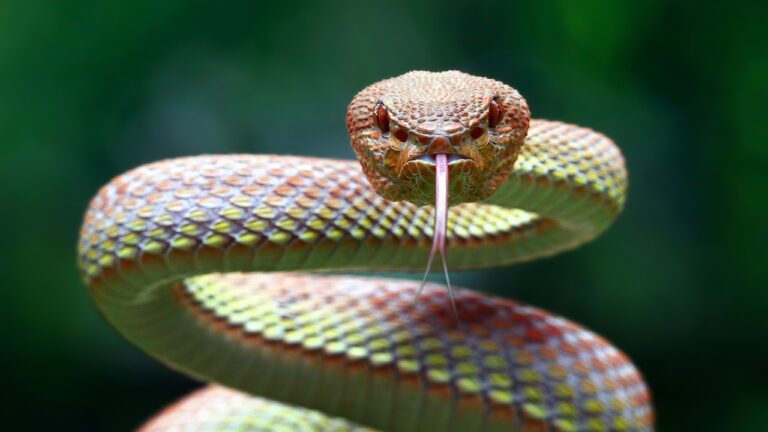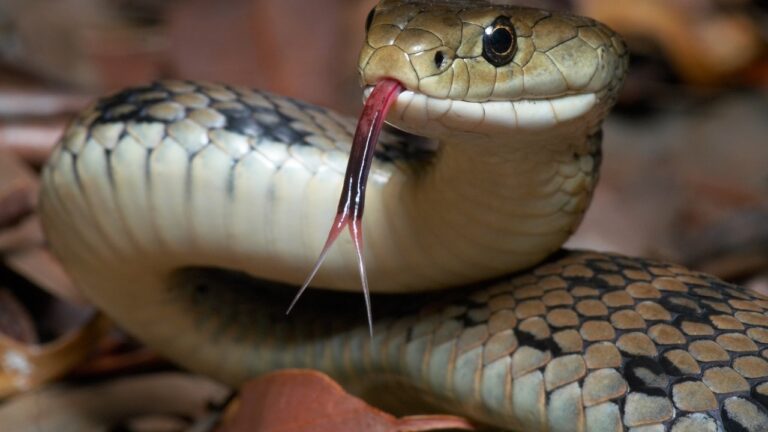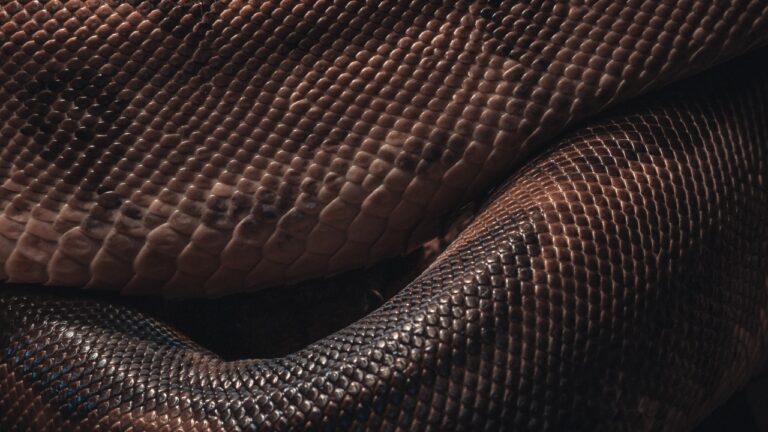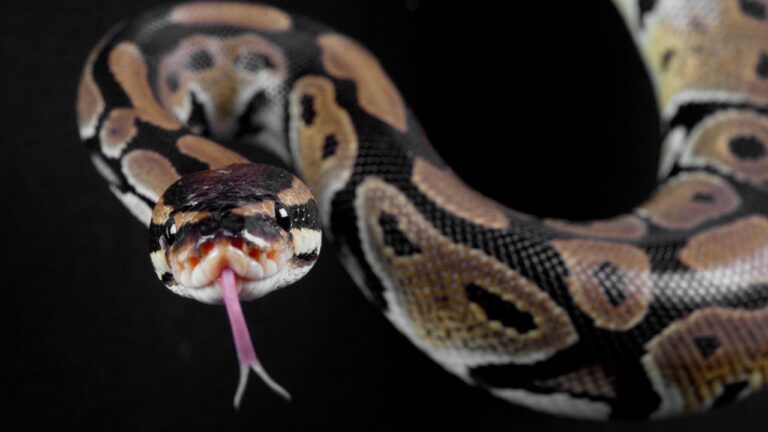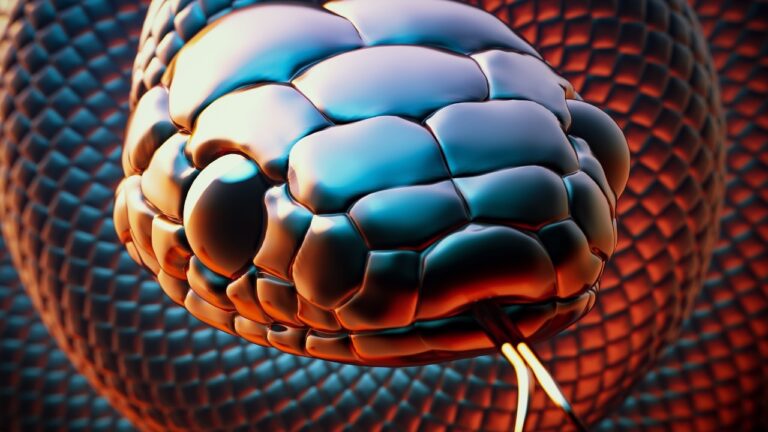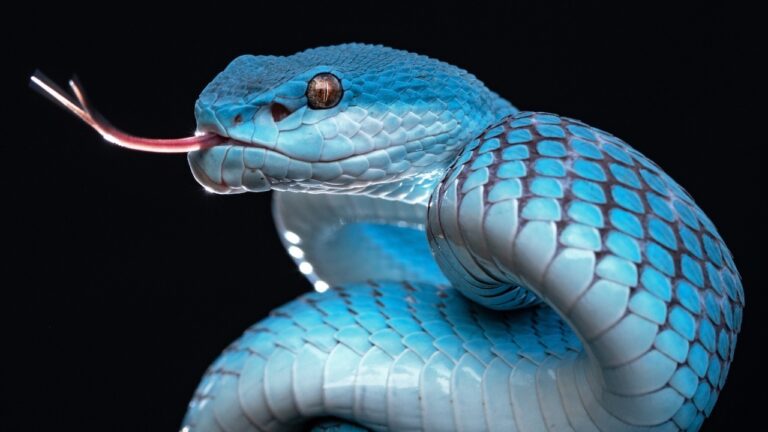Mastering Snake Food Preparation: A Complete Guide
Importance of Proper Snake Food Preparation
In the enchanting world of reptiles, snakes have captivated the imaginations of both enthusiasts and casual observers alike. With their slithering grace and mysterious allure, these legless creatures have intrigued humanity for centuries. From the majestic pythons to the agile corn snakes, the diversity of snake species is as fascinating as it is vast. But have you ever wondered what it takes to keep these serpents well-fed and content?
Proper snake food preparation is a crucial aspect of responsible snake ownership. Just like any other pet, snakes have specific dietary requirements that must be met to ensure their health and well-being. Whether you are a seasoned snake keeper or a curious beginner, understanding the importance of proper snake food preparation is essential to the overall care of these mesmerizing creatures.
Why is it so important? Well, imagine if you were served a meal that lacked the necessary nutrients your body needs to thrive. You would feel weak, fatigued, and your overall health would suffer. The same principle applies to snakes. Without a well-balanced and carefully prepared diet, these remarkable reptiles can face a range of health issues, from malnutrition to obesity.
But fear not, aspiring snake enthusiasts! This comprehensive guide will equip you with the knowledge and skills needed to master the art of snake food preparation. We will delve into the intricacies of snake diet requirements, explore different prey options, and provide expert tips on feeding techniques. By the end of this journey, you will be armed with the wisdom to nourish your scaly companions with confidence and finesse.
So, let us embark on this adventure together, as we uncover the secrets of snake food preparation and unlock a world of vitality and well-being for our slithery friends. Are you ready to dive into the captivating realm of snake nutrition? Let’s begin!
Understanding Snake Diet Requirements
When it comes to keeping a snake as a pet, understanding their dietary needs is of utmost importance. Just like any other living creature, snakes have specific requirements when it comes to their diet. In this section, we will delve into the different types of snakes and their dietary needs, as well as explore the concept of balanced nutrition for these fascinating reptiles. Additionally, we will take a closer look at the common prey species that snakes typically consume.
Types of Snakes and Their Dietary Needs
Snakes come in a wide variety of species, each with its own unique dietary requirements. From the smallest of corn snakes to the largest of pythons, it is essential to know what these creatures need in order to thrive. Some snakes are carnivorous, while others may be insectivorous or even herbivorous. Understanding the specific dietary needs of the snake species you are caring for is vital to their overall health and well-being.
Balanced Nutrition for Snakes
Just like humans, snakes require a balanced diet to maintain optimal health. A well-rounded diet ensures that snakes receive all the necessary nutrients they need to thrive. This includes a combination of proteins, fats, vitamins, and minerals. By providing a varied and nutritionally complete diet, snake owners can help prevent deficiencies and ensure their pets lead healthy lives.
Common Prey Species for Snakes
Snakes are known for their incredible hunting abilities, and they prey on a wide range of animals in the wild. Depending on the species, snakes may consume rodents, birds, fish, or even other reptiles. Understanding the natural prey preferences of your specific snake species is crucial when it comes to replicating their diet in captivity. By offering the appropriate prey items, you can ensure that your snake’s nutritional needs are met while also stimulating their natural hunting instincts.
In the next section, we will explore the different methods of preparing snake food, including both frozen and live prey options. Stay tuned to discover the best practices for maintaining your snake’s diet and ensuring their overall well-being.
Next Up: Preparing Frozen Prey
Preparing Frozen Prey
When it comes to the dietary needs of our slithering companions, it’s crucial to provide them with a well-rounded and nutritious meal plan. While live prey offers a natural hunting experience for snakes, frozen prey has become a popular alternative for several reasons. In this section, we’ll delve into the art of preparing frozen prey, covering everything from selecting quality food to thawing techniques and maintaining proper hygiene.
Selecting Quality Frozen Prey
Choosing the right frozen prey is the first step in ensuring your snake receives a balanced and healthy diet. It’s essential to source your frozen prey from reputable suppliers who follow stringent quality control measures. Look for suppliers that specialize in snake food and have a wide variety of prey options available. This will help you cater to your snake’s specific dietary requirements.
When selecting frozen prey, opt for options that closely resemble the natural prey of your snake species. This will not only enhance the hunting experience for your snake but also provide the necessary nutrients for its overall well-being. Some common frozen prey options include mice, rats, and chicks. Remember that the size of the prey should be appropriate for the size of your snake.
Thawing Techniques
Once you have chosen the high-quality frozen prey for your snake, it’s time to thaw it correctly. Thawing frozen prey may seem like a simple task, but it’s important to do it properly to maintain the nutritional value and reduce the risk of bacterial growth.
The best way to thaw frozen prey is to place it in the refrigerator overnight. This slow thawing method ensures that the prey thaws evenly and minimizes the risk of bacterial contamination. Avoid using the microwave or hot water to thaw the prey as this can lead to uneven heating and potential nutrient loss.
If you find yourself in a hurry, you can opt for the quick-thawing method. Place the frozen prey in a sealed plastic bag and submerge it in cold water. Change the water every 30 minutes until the prey is fully thawed. However, be cautious not to leave the prey submerged for too long, as this can promote bacterial growth.
Maintaining Hygiene and Food Safety
When handling frozen prey, it is imperative to prioritize hygiene and food safety. Always remember that the health of your snake depends on the cleanliness of its food. Before handling the frozen prey, make sure to wash your hands thoroughly with soap and warm water.
To prevent cross-contamination, it’s advisable to use separate utensils and cutting boards for your snake’s food preparation. This helps avoid the transfer of harmful bacteria to your snake’s food, reducing the risk of digestive issues or infections.
After thawing the frozen prey, inspect it carefully to ensure it is in good condition. Discard any prey that shows signs of spoilage or freezer burn, as these can negatively impact your snake’s health. Remember, a healthy snake starts with high-quality and safe food.
By following these guidelines for preparing frozen prey, you are taking a step towards providing your snake with a nutritious and wholesome meal. Remember to consult with a veterinarian or an experienced reptile professional for additional guidance tailored to your snake’s specific dietary needs. In the next section, we will explore the preparation of live prey and the safety considerations involved. Stay tuned!
Preparing Live Prey
When it comes to feeding your slithering companion, there are a few important considerations to keep in mind. One of the options available to snake owners is feeding their reptiles live prey. This method can provide a more natural feeding experience for the snake, as it allows them to exhibit their hunting instincts. However, it is crucial to approach live prey preparation with caution and ensure the safety and well-being of both the snake and the prey.
Safety Considerations
Safety should always be the top priority when preparing live prey for your snake. It is essential to choose prey that is appropriate in size and species for your snake. Opting for prey that is too large can pose a choking hazard, while prey that is too small may not provide adequate nutrition. Researching the specific dietary needs of your snake is vital in order to make informed decisions about the size and species of live prey.
Additionally, it is crucial to supervise the feeding process closely. This ensures that the snake captures and consumes the prey without any mishaps. By being present during feeding time, you can intervene if necessary and prevent any potential injuries to your snake.
Proper Handling Techniques
When handling live prey, it is important to do so with care and precision. Handling the prey properly is essential to prevent any harm to either the snake or the prey. One common method is using tongs or forceps to hold the prey and present it to the snake. This technique allows for a safe and controlled transfer of the live prey to the snake’s enclosure.
It is crucial to avoid using your hands to handle the prey directly, as this can result in injuries to both you and the prey. By using tongs or forceps, you can maintain a safe distance from the prey while ensuring a successful feeding experience for your snake.
Ensuring Prey is Free from Disease
Another important aspect of preparing live prey for your snake is ensuring that the prey is free from disease or parasites. Infectious diseases can be transmitted from the prey to your snake, compromising its health. To minimize the risk, it is recommended to purchase live prey from reputable suppliers who maintain high standards of hygiene.
Regularly inspecting the live prey for any signs of illness or parasites is also crucial. Look for any abnormalities, such as lesions, excessive lethargy, or unusual behavior. If you notice any concerning signs, it is best to avoid feeding that particular prey to your snake and consult a veterinarian for guidance.
By following proper handling techniques and ensuring the prey is disease-free, you can provide your snake with a safe and enriching feeding experience.
Remember: Live prey should only be fed to snakes that require it as part of their natural diet. Some snake species may thrive on a diet of frozen or pre-killed prey, so it is important to understand the specific dietary needs of your snake. For more information on snake diets, you can check out our article on snake diet.
With safety considerations, proper handling techniques, and disease prevention in mind, you can confidently incorporate live prey into your snake’s feeding routine. Always prioritize the well-being of your snake and provide them with a diet that meets their nutritional requirements.
Alternative Diets for Snakes
When it comes to feeding our slithery companions, it’s essential to explore all the options available to ensure they receive a well-rounded and nutritious diet. While the conventional choice of rodents as snake food is widely accepted, there are alternative diets that can provide the same level of sustenance for our scaly friends. In this section, we’ll delve into some exciting alternatives that can offer a fresh perspective on snake nutrition.
Feeding Snakes with Rodent Alternatives
While rodents are commonly fed to snakes, it’s worth considering other options to add variety to their diet. One alternative to rodents is avian prey, such as quails or chicks. These feathered delights not only provide essential nutrients but also present a more challenging feeding experience for your snake. The act of catching and consuming avian prey can simulate the hunting instincts of wild snakes, promoting natural behaviors and a healthy appetite.
Another rodent alternative is fish. Fish, such as small freshwater varieties, can provide a rich source of protein and essential fatty acids for your snake. Many snakes, particularly aquatic species, have adapted to a piscivorous diet in the wild. By incorporating fish into their feeding routine, you can mimic their natural dietary preferences and enhance their overall well-being.
Insect-Based Diets for Snakes
For some snake species, insects can be a fantastic alternative to traditional rodent meals. Insects offer a wide range of nutritional benefits and can be an excellent source of protein, vitamins, and minerals. Popular choices include crickets, mealworms, and waxworms, which can be easily sourced from reputable insect breeders or pet stores. These small crawlers can be a delightful addition to your snake’s diet, providing a diverse range of flavors and textures that can entice even the pickiest eaters.
Other Non-Mammalian Prey Options
If you’re feeling adventurous and want to explore even more non-mammalian prey options, there are a few to consider. Reptile owners have successfully incorporated birds, fish, and insects into their snake’s diet, but there are additional choices worth exploring. Some snakes have been known to enjoy the occasional amphibian meal, such as frogs or tadpoles. However, it’s crucial to research the specific dietary needs and restrictions of your snake species before introducing any new prey items.
Additionally, some snake owners have experimented with small reptiles as an alternative food source. This includes offering lizards, geckos, or even other snake species as prey. However, it’s important to exercise caution and ensure that the prey you choose is appropriate for your snake’s size and feeding habits.
By expanding the dietary options for our scaly companions, we not only provide them with a varied and interesting feeding experience but also encourage their natural instincts and promote overall health. Remember to research and consult with experts to determine the suitability and safety of these alternative diets for your particular snake species.
In the next section, we will explore feeding techniques and best practices to ensure your snake’s health and well-being. Stay tuned!
Continue reading:
Feeding Techniques and Best Practices
When it comes to feeding snakes, there are a few key techniques and best practices that every snake owner should be aware of. From determining the appropriate feeding frequency and portion sizes to monitoring your snake’s eating habits, these practices will help ensure that your slithery friend stays healthy and well-nourished. Additionally, addressing any feeding issues or refusals that may arise is crucial to maintaining your snake’s overall well-being.
Feeding Frequency and Portion Sizes
Determining the correct feeding frequency and portion sizes for your snake is vital to its health. Snakes have different metabolic rates and dietary needs, so it’s important to do your research and understand the specific requirements of your snake species. Generally, most snakes are fed once every 1-2 weeks, but some may require more frequent meals.
When it comes to portion sizes, it’s crucial to strike a balance. Overfeeding can lead to obesity and other health issues, while underfeeding can result in malnutrition. It’s recommended to offer prey that is about the same width as your snake’s thickest part of the body. This ensures that your snake is receiving an appropriate meal that it can comfortably consume.
Monitoring Snake’s Eating Habits
Keeping a close eye on your snake’s eating habits is essential for their well-being. By monitoring their eating patterns, you can quickly identify any changes or issues that may arise. Regularly observe your snake during feeding time to ensure that they are consuming their prey properly. If you notice any signs of difficulty or hesitation, it may indicate a problem with the prey size or health.
Additionally, it’s important to keep track of your snake’s weight. Regularly weighing your snake will help you determine if they are maintaining a healthy body condition. Sudden weight loss or gain can be an indication of an underlying issue, and it’s important to address it promptly.
Addressing Feeding Issues or Refusals
Sometimes, snakes may refuse to eat or encounter issues during feeding. Feeding issues can arise due to various reasons, such as stress, illness, or simply a change in their environment. If your snake refuses to eat, it’s crucial not to panic. Snakes can go for extended periods without food, especially during brumation or breeding seasons.
However, if your snake consistently refuses to eat or shows other signs of illness, it’s important to consult with a veterinarian. They can help identify any underlying health issues and provide guidance on how to address the problem.
Remember, proper snake food preparation is just one part of ensuring your snake’s well-being. By following these feeding techniques and best practices, you can ensure that your snake has a healthy and fulfilling diet.
Continue reading: Snake Feeding Tips
Conclusion
In conclusion, mastering the art of snake food preparation is crucial for the health and well-being of your scaly companions. By understanding the dietary requirements of snakes and providing them with balanced nutrition, you can ensure their optimal growth and development.
Whether you choose to feed your snake frozen or live prey, it is essential to follow proper techniques and safety considerations. When preparing frozen prey, be sure to select high-quality options from reputable snake food suppliers. Thawing techniques should be employed to ensure the prey is at an appropriate temperature for consumption. Additionally, maintaining hygiene and food safety protocols is paramount to prevent any potential illnesses.
For those considering alternative diets for their snakes, there are various options available. Feeding snakes with rodent alternatives or insect-based diets can provide a diverse and nutritious menu. Exploring non-mammalian prey options can also be beneficial for snakes with specific dietary needs or preferences.
Implementing best practices when it comes to feeding snakes includes monitoring their eating habits and adjusting feeding frequency and portion sizes accordingly. It is essential to address any feeding issues or refusals promptly, as they may indicate underlying health concerns.
Remember, when it comes to snake food preparation, knowledge is power. Educate yourself about the specific dietary needs of your snake species and consult with a veterinarian or reptile expert if needed. By following these guidelines and being proactive in providing the best possible diet for your snake, you can ensure their longevity and overall well-being.
For more information on snake diet and feeding tips, you can visit our website for resources such as snake diet, feeding snakes, frozen snake food, live snake food, snake feeding schedule, snake food recipes, snake food suppliers, best snake food, snake feeding tips, and homemade snake food.
Remember, a well-fed snake is a happy snake!


